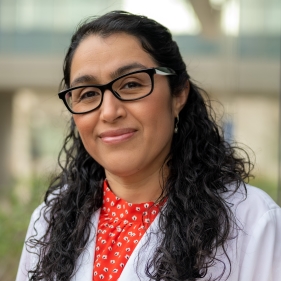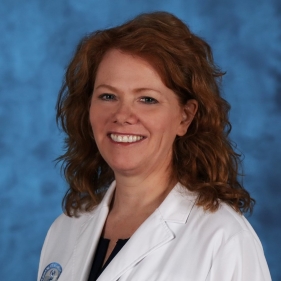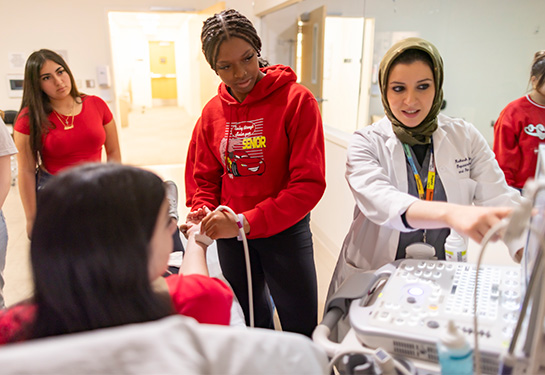Record enrollment for UC Davis 3-year medical school program
Accelerated pathway aims to meet urgent need for primary care physicians
In his first days of medical school this past summer, Semaj Hornbuckle absorbed a series of fast-paced topics that most students don’t encounter until much later in their studies.
He learned how to write detailed notes on patient medical conditions. He discovered how to take accurate readings of vital signs. He even picked up techniques from seasoned professors on how to perform a physical examination.
By the end of a dizzying first week, Hornbuckle and a select group of classmates from the UC Davis School of Medicine took the next step of their academic journey: They headed off campus and walked nervously into an outpatient clinic where they cared for patients under the supervision of experienced physician mentors.
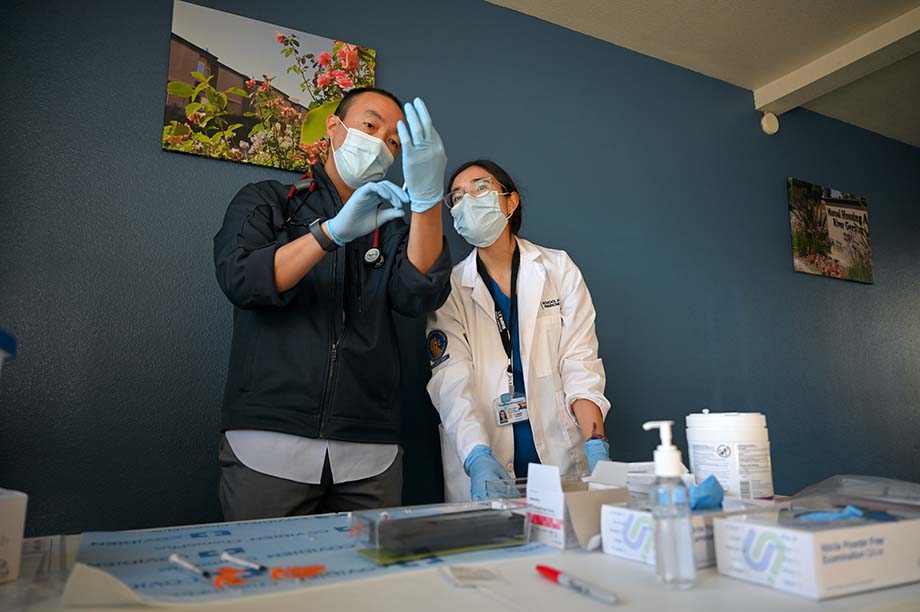
In the majority of U.S. medical schools, students begin their clerkships, their most important clinical experience, in their third year. But UC Davis is not your typical school. Hornbuckle and nine classmates are part of an accelerated pathway that puts them through medical school in just three years instead of four. The goal is to more quickly produce primary care doctors for Californians who desperately need them.
The innovative program is called ACE-PC, short for Accelerated Competency-based Education in Primary Care. ACE-PC was developed through a robust partnership between UC Davis and Kaiser Permanente Northern California, the region’s largest health-care organization known for its emphasis on primary care and preventative medicine.
For Hornbuckle, ACE-PC is an intense year-round medical education in two classrooms – one at the UC Davis Health campus in Sacramento, the other a few miles away in the exam rooms of Kaiser Permanente’s Fair Oaks Medical Offices.
“I feel honored to be in this position, but I don’t take it lightly,” Hornbuckle said. “I try to prepare as much as possible and understand that everything I’m learning in class right now can be tied and related to something I’m going to see in clinic.”
UC Davis and Kaiser Permanente awarded $1 million grant
The origins of ACE-PC date back to 2013 when the American Medical Association (AMA) challenged medical schools to find creative ways to train physicians to better meet the health needs of patients.
UC Davis, a longtime leader in preparing students to work in diverse, low-resource communities came up with an audacious proposal: The School of Medicine would team up with Kaiser Permanente to develop a novel pathway for highly-qualified students committed to becoming primary care doctors. The program would compress medical education into three years by providing a rigorous longitudinal curriculum including summers and authentic clinical experiences beginning in the first week.
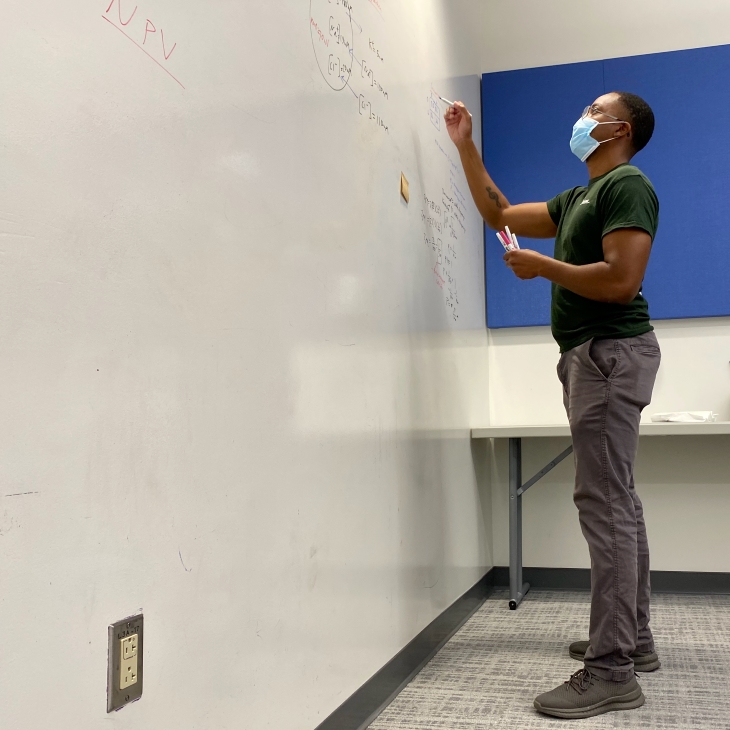
“Many people thought it couldn’t be done,” said Mark Henderson, the associate dean of admissions who gathered colleagues around his kitchen table to start planning ACE-PC in 2013. “But we understood the urgent need to address the primary care shortage in California and elsewhere, specifically by enhancing the diversity of the workforce to better reflect the populations we aim to serve,” he said.
The AMA was wowed. It awarded the partnership a $1 million grant to make the proposal a reality. In June 2014 the School of Medicine welcomed its first six students into ACE-PC.
A total of 53 students have now completed ACE-PC, which prepares students for residency training in primary care internal medicine or family medicine.
The current, first-year ACE-PC class that started in June has 10 students, a record high.
“One of the reasons ACE-PC has been successful is that students gain the skills that prepare them for high-quality residency programs,” said Alicia González-Flores. She is executive director of Community Health Scholars, the UC Davis School of Medicine initiative that oversees ACE-PC and other workforce development pathways.
“We are excited to see the fruits of our labor these past few years, as more and more former students join the ranks of the primary care workforce, many in medically underserved areas,” González-Flores added.
We are excited to see the fruits of our labor these past few years, as more and more former students join the ranks of the primary care workforce, many in medically underserved areas.”—Alicia González-Flores, executive director, UC Davis School of Medicine Community Health Scholars
Committed to primary care
Students like Hornbuckle are drawn to careers in primary care because they want to have meaningful relationships with patients, educate them on disease prevention and help manage their chronic conditions.
Students are selected for ACE-PC based on their commitment to primary care. They are typically older than traditional medical students and have worked in health care settings after college. They bring life experience and an appreciation for patient-centered care and are more likely to come from disadvantaged backgrounds.
“These students come from very diverse backgrounds and they want to return to serve their communities,” said Hillary Campbell, an internal medicine physician who leads medical education initiatives at Kaiser Permanente in Greater Sacramento. “Their life experiences make them really good physicians.”
One thing ACE-PC students all have in common: They aspire to be medical messengers within their own, frequently underserved, communities.
Hornbuckle knew he wanted to pursue medicine in the moments after his father had a stroke in their South Sacramento home.
“I drove him to the emergency room,” Hornbuckle said. “I took it upon myself to just be a person of action to understand what's going on and to spread that information to other individuals.”
Hornbuckle, who is Black, hopes to be a primary care doctor in South Sacramento because he personally knows African Americans who distrust the medical system. He knows – and research has proven – patients of color feel more comfortable talking candidly about health issues and are more likely to pursue treatments if their physician looks like them or understands their culture.
“I just want to be a resource that people can utilize in order to deal with their health needs,” Hornbuckle said, “because many individuals don't go and deal with their hypertension, or don't manage their diabetes or other chronic illnesses – and many complications including stroke could be avoided if they went to a primary care physician on a regular basis.”
Clinical care at the heart of the program
Once students are accepted into the UC Davis School of Medicine, they may apply to one of several specialized pathways intended to boost the number of doctors in underserved areas and address health inequities.
ACE-PC is the most demanding pathway, and the only one that catapults students into a clinic on the fifth day of medical school.
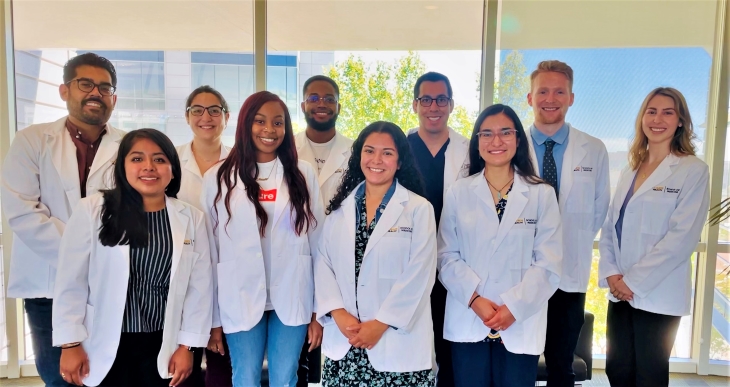
That hands-on experience makes all the difference for students such as Alejandra Hernández Villagomez. She was raised in Healdsburg, in Sonoma County, and has a special affinity for people like her mother – monolingual Spanish-speaking immigrants who want to have confianza, or trust, in their primary care provider.
“I was a translator for my mom at a very young age. Since my mom is only Spanish speaking, I would go to her visits with her. And seeing how uncomfortable she was telling her doctor about her home remedies, for fear of being misjudged or misunderstood, made me realize that I could have been that doctor that she was looking for at that time.”
Hernández Villagomez helped provide medical care in Oaxaca, Mexico, as part of a study abroad program during her undergraduate days at UC Davis. And she later worked as an emergency room medical scribe. But she admits being “a little scared” when going into Kaiser Permanente’s Downtown Commons Medical Offices to conduct her first physical exam last summer.
“Usually in med school you just work with standardized patients, actors who are pretending to be patients, and you don't get to actually work with real patients until your third year unless you're involved with student-run clinics,” she said.
“Being able to work with actual patients and being able to see a disease that is manifested in somebody other than, you know it's faked in another patient, I'm able to relate better to what the disease is, and to the patient,” she added. “It's very inspiring and very enlightening to be able to work with patients at a very early stage.”
Her preceptor and mentor, David Roldan, who graduated from the UC Davis School of Medicine, says he’s “amazed” by Hernández Villagomez’ clinical skills.
“She’s able to talk to a patient, have the insight to ask certain questions that you know as a seasoned physician you sometimes forget to ask, so I can recognize that she's had a journey to get to medicine that has made her a special candidate,” Roldan said. “She’s a perfect fit for the ACE-PC program.”
We feel like it’s just a win-win-win-win situation for the students, for the patients, for Kaiser Permanente and for UC Davis.”—Hillary Campbell, medical education leader for Kaiser Permanente in Greater Sacramento
A solution to the looming physician shortage
Within the next eight years, California is projected to face a shortfall of more than 4,100 primary care clinicians, according to the California Future Health Workforce Commission.
The commission, which includes influential leaders in health, education, policy and workforce development, points to programs such as ACE-PC as model programs to help close the deficit, especially in medically underserved regions such as the Central Valley.
“California’s minoritized and rural communities suffer the most from physician workforce shortages. Accelerated medical school programs are the type of innovation needed to help solve this crisis, said Tonya Fancher, the school of medicine’s associate dean who oversees efforts to diversify the physician workforce.
When ACE-PC first started, there were just a handful of three-year medical school programs in the U.S. Now there are more than 20, according to the Consortium of Accelerated Medical Pathway Programs.
UC Davis leaders are grateful for the integral partnership with Kaiser Permanente, which makes the program and its growth possible.
“Kaiser Permanente is a leader in medical care in our community and throughout California, as well as nationally,” Fancher said. “We would not be the School of Medicine we are without their support of ACE-PC and many other programs.”
Over the next three years, students like Hornbuckle and Hernández Villagomez acknowledge they have a huge responsibility. They know it won’t be an easy road.
One of their professors and mentors can relate.
“The challenges and the stresses of med school are unique and can be hard to understand for someone who hasn’t gone through it. So the support we get from our classmates is really important for getting through medical school in one piece,” said Ian Kim, a graduate of the first ACE-PC class who is now a primary care physician at CommuniCare, a local community health center. Kim is also a faculty member in the Department of Family and Community Medicine at UC Davis Health and teaches ACE-PC students the skills needed to interact with patients.
Of the six students in the inaugural class, one works at Kaiser Permanente, three are practicing in community-based primary care settings, and another is pursuing a nephrology fellowship, Kim said.
The accelerated medical school program resulted in long-lasting friendships for Kim and his classmates. “We are still texting each other all the time, we’ve gone to each other’s weddings,” Kim said. The first six graduates have finished their residencies and are talking about holding a reunion.
Campbell, who along with Henderson, Fancher and other physicians who started ACE-PC and help select students for the program, looks forward to the next few years when dozens of graduates-turned-residents will join the primary care workforce.
“We’re very committed to a diverse and equitable workforce to serve our patients and all of California,” Campbell said. “We feel like it’s just a win-win-win-win situation for the students, for the patients, for Kaiser Permanente and for UC Davis.”
UC Davis School of Medicine
The UC Davis School of Medicine is among the nation's leading medical schools, recognized for its research and primary-care programs. The school offers fully accredited master's degree programs in public health and in informatics, and its combined M.D.-Ph.D. program is training the next generation of physician-scientists to conduct high-impact research and translate discoveries into better clinical care. Along with being a recognized leader in medical research, the school is committed to serving underserved communities and advancing rural health. For more information, visit UC Davis School of Medicine at medschool.ucdavis.edu.

